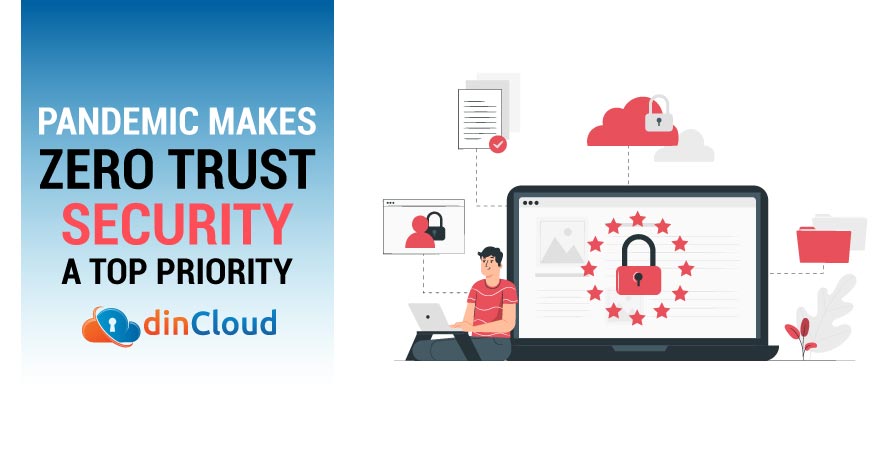Enterprises have traditionally remained a notch optimistic about their cyber security posture. While this may not always be true, the level of control they used to exercise in the pre-pandemic era at least led them to believe so.

However, after the Covid-19 pandemic and the mainstreaming of remote work, the entire scenario has changed altogether. Now, both mission critical data and applications are residing beyond the confines of the safety of corporate networks.
That is just one aspect of the security challenges, as the number and range of devices now being used by remote employees to access organizational resources has also multiplied. This opens up a whole new dimension of cyber security challenges.
Related: Zero Trust Security – An Effective Risk Mitigation Model
The Solution – A Zero Trust Security Model
Whenever you try to “sell” Zero Trust Security to an enterprise, there is hardly someone who opposes the idea. However, when it comes to the resource allocation and implementation phase, things start to get a whole lot trickier.
However, the drastic shift in work patterns after the pandemic has forced organizations to re-visit their somewhat sluggish attitude towards Zero Trust Security. Now, they are left with no option but to accord priority to this extremely effective security regime.
Related: Zero Trust Security – Today’s Inevitable Necessity
Zero Trust Security Principle
The whole Zero Trust Security revolves around a few core assumptions. The foremost element of this model is that no user, no matter how privileged access rights have been granted, is to be allowed access to data or apps without proper authentication.
Another key facet of the Zero Trust Security model is that vulnerabilities and threats do not arise just from the external actors, rather such risks may also be posed due to the actions of internal stakeholders, employees in particular.
Related: How to Navigate the Journey Towards Zero Trust Security?
Privileged Accounts – A Top Risk to Address
The Zero Trust Security model attaches top priority to user accounts with privileged access rights. This is an in-evitable aspect of any organizational network, as these accounts are used to lay down security policies and protocols for other users over the network.
A major reason for attaching top priority to these accounts is that if a cyber miscreant is able to compromise even one such account with privileged or admin level access rights, such actor can magnify the impact of a breach via lateral movement in the network.
Now, lets highlight some building blocks of the Zero Trust Security model, so that once implemented, it yields the desired results.
User Authentication
This is one of the most critical elements of any Zero Trust model of security. It is imperative that user authentication is not based just on “static” parameters such as a password. It must be augmented with at least another “dynamic” element, such as an OTP etc.
Network Segmentation
The other important element of zero trust is network segmentation. This is vital because it mitigates the risk and imminent damage in case a security breach does happen, as this possibility can never be completely ruled out.
Related: Why Zero Trust Security Strategy is Future for Businesses
Least Privileged Access
By following the principle of least privileged access, information security experts can grant employees access to data, apps or other resources purely based on the nature of the assigned tasks and nothing more. This will also mitigate the damage in case of a breach.
Network Monitoring
This is an on-going process, which needs to be comprised of both the human and AI based elements. By doing so, an enterprise will be able to constantly improve its existing zero trust protocols and also identify anomalies or red flags well before a breach occurs.
Related: Study Reveals a Positive Correlation b/w Zero Trust Security and Employee Experience
Conclusion
Zero Trust Security has always been a no-brainer. The circumstances created by the pandemic have only enhanced the urgency of implementing this security model to a great extent. You should also take a first step in this direction and get the ball rolling.
Please feel free to Contact dinCloud for secure, reliable and robust cloud solutions for your enterprise or individual needs.


